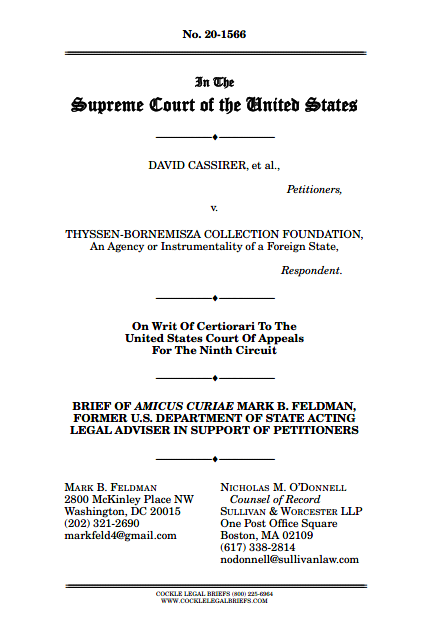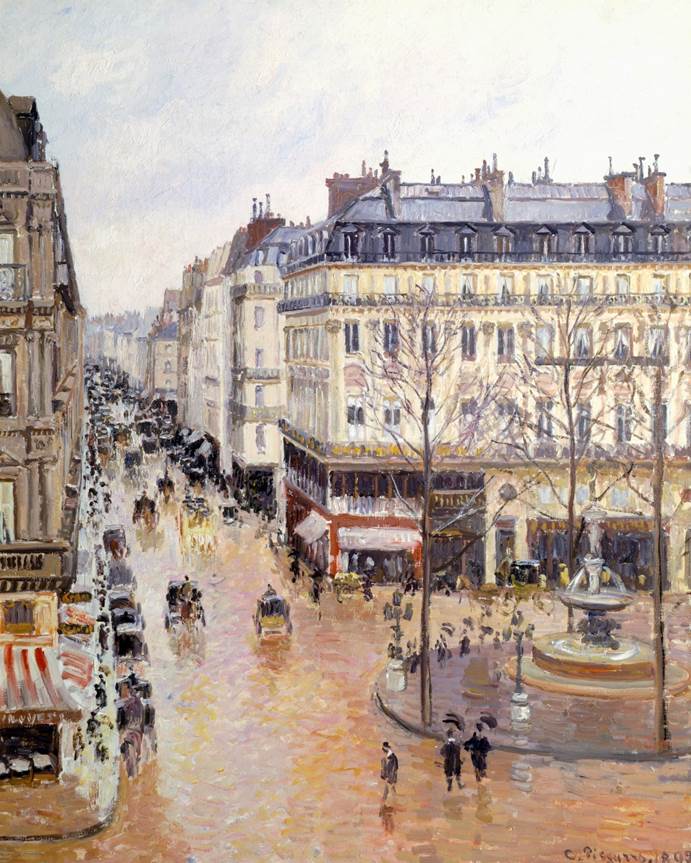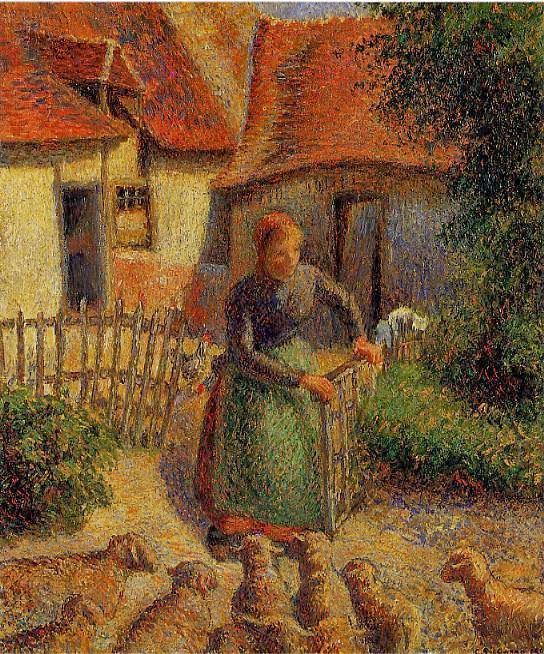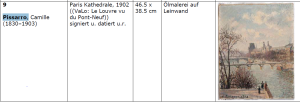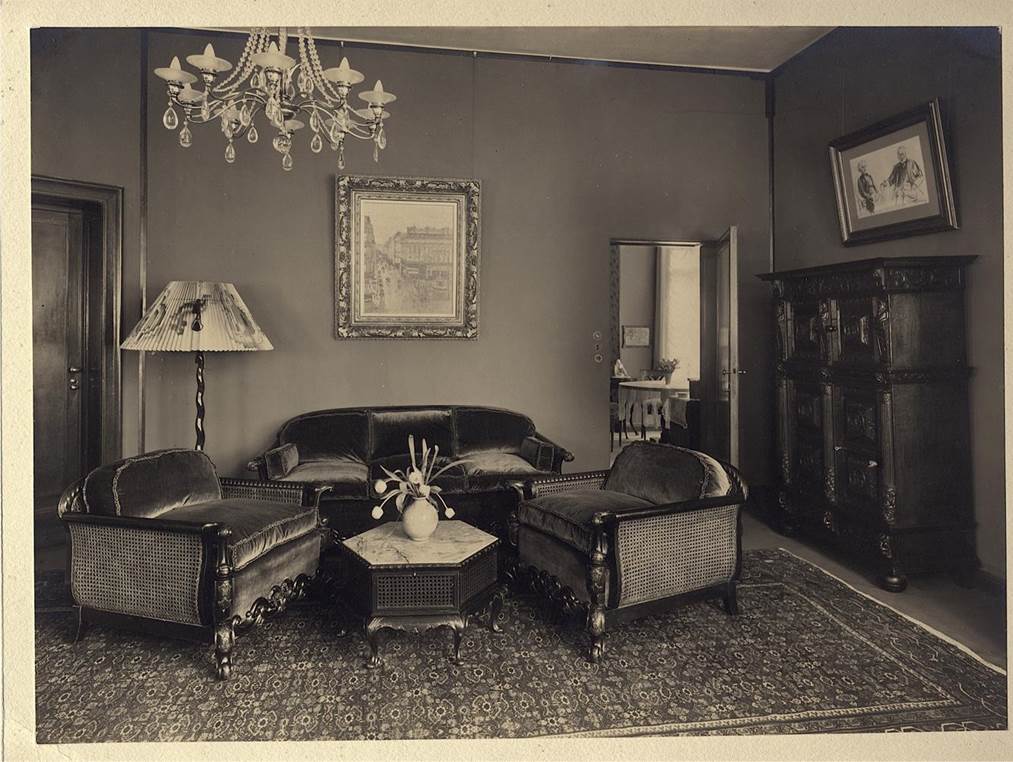
The U.S. Court of Appeals for the 9th Circuit ruled on January 9, 2024 that the Thyssen-Bornemisza Collection Foundation in Madrid is the owner of Rue Saint–Honoré, après-midi, effect de pluie (1892) by Camille Pissarro, a painting sold by German Jew Lilly Cassirer under Nazi duress. After the Cassirer family prevailed in the Supreme Court in 2023 that the 9th Circuit had previously applied the wrong legal test, the question before the 9th Circuit was the choice of which law to apply. In any case where the parties and subject matter are in different jurisdictions (or within overlapping jurisdictions like state and federal), a court must first decide which body of law to apply in analyzing a particular case. Here, the 9th Circuit ruled that Spanish law applied because Spanish law would be harmed more than California law if the other body of law applied (known as comparative impairment analysis). This, in turn, led to the holding that the Thyssen-Bornemisza Collection Foundation acquired good title after holding the painting for long enough that prior claims were extinguished.
The decision is thinly-reasoned. It looks to the “place of relevant conduct” as paramount to choosing applicable law, but concluded that the only relevant conduct was Spain’s purchase in 1993 of the Baron Hans Heinrich Thyssen-Bornemisza’s collection. Not the Baron’s Swiss residence, not his purchase of a stolen painting in New York (not located in Spain when last we checked) in 1976, not the earlier (New York) sale by Knoedler Gallery, nor the painting’s passage through California in the 1950s, nor the source of the defect in the first place: Nazi Germany. Rather, The court insultingly referred to Holocaust survivor and refugee Claude Cassirer’s life in California as a “fortuity.” As the late Justice Antonin Scalia might have said, “pure applesauce.”
The upshot is that a state (Spain, through the TBC) that did not acquire good title to a painting that was indisputably dispossessed by the Nazis will (barring further review) keep this ill-gotten property. Spain should have returned the painting the first time it was asked to do so. Digging its heels in over 18 years of litigation is a mockery of the commitments Spain made in the 1998 Washington Principles on Nazi-Confiscated Art. Nothing about Spanish law is impaired by refusing to honor a transaction at the direction of the Nazis.
The family has vowed to fight on, and good for them. As I often tell people as an example to frame this issue and this case, the picture below is of the painting in Lilly’s home. Now imagine that this was your home, and the very worst person you knew came in and demanded it because he knew you had no power to resist. Would you give up?
Read More
Topics:
Lilly Cassirer,
Rue Saint-Honoré après-midi effet de pluie,
Claude Cassirer,
Foreign Sovereign Immunities Act,
California,
Washington Principles on Nazi-Confiscated Art,
Spain,
FSIA,
Camille Pissarro,
Ninth Circuit Court of Appeals,
Cassirer v. Thyssen-Bornemisza Collection,
Jakob Scheidwimmer,
Sydney Schoenberg,
Eugen Kampf,
Antonin Scalia,
Hans W. Lange,
Federal Republic of Germany v. Philipp,
Philipp v. Stiftung Preussischer Kulturbesitz,
Simon v. Republic of Hungary,
choice of law,
Baron Thyssen-Bornemisza
Today I am pleased to announce that I have filed a brief in the Supreme Court of the United States as counsel of record for amicus curiae Mark B. Feldman, former U.S. Department of State Acting Legal Adviser. We filed the brief in the case of Cassirer et al. v. Thyssen-Bornemisza Collection Foundation (“TBC”). Cassirer is the long-running dispute over title to Rue St. Honoré, après-midi, effet de pluie (Rue St. Honoré, Afternoon, Rain Effect) by Impressionist painter Camille Pissarro. The painting once belonged to Lilly Cassirer, a Jewish woman in Berlin in 1939, from whom Nazi agents “bought” the painting. The case before the Supreme Court is not about whether the painting was stolen—it is undisputed that it was. Rather, the Supreme Court will review the Ninth Circuit’s decision that Spanish law, not California law, should govern the ownership rights.
Read More
Topics:
Lilly Cassirer,
Foreign Sovereign Immunities Act,
Supreme Court,
SPK,
Stiftung Preussischer Kulturbesitz,
Hermann Goering,
FSIA,
expropriation exception”,
sovereign immunity,
UNESCO,
Rue St. Honoré,
Camille Pissarro,
Baron Hans-Heinrich Thyssen- Bornemisza,
Cassirer v. Thyssen-Bornemisza Collection,
Welfenschatz,
Jakob Scheidwimmer,
Philipp v. F.R.G.,
Mark B. Feldman
I was pleased for the opportunity to chat with Larry Perel of KCRW in Santa Barbara about the significance of the recent ruling that the Thyssen-Bornemisza Museum in Madrid is the owner of Rue St. Honoré, effet de pluie by Camille Pissarro—notwithstanding that there was no dispute that it had been looted from the Cassirer by the Nazis. You can listen to the full audio of the radio broadcast here. I discussed the Cassirer case, the more recent decision by the United States Supreme Court not to hear further appeal of Marei von Saher’s lawsuit against the Norton Simon Museum, and other current issues concerning the restitution of Nazi-confiscated art claims. You can read more background on these cases here at the Art Law Report, or in A Tragic Fate—Law and Ethics in the Battle Over Nazi-Looted Art.
Read More
Topics:
Nazi-looted art,
Marei Von Saher,
Camille Pissarro,
Art Law Report,
A Tragic Fate,
Thyssen-Bornemisza Museum,
Rue St. Honoré effet de pluie,
Nazi-confiscated art,
Larry Perel,
KCRW,
Santa Barbara,
Madrid
In December it was announced that the University of Oklahoma and Leone Meyer had reached a tentative settlement in the litigation over Meyer’s claims to La Begère by Camille Pissarro, a painting stolen from her father Raoul during the Vichy regime. Yesterday the final agreement was made public. As reported by Graham Bowley at the New York Times, title to the painting will reportedly be confirmed as Meyer’s, and the work will be displayed on a rotating basis in France (where Meyer lives) and the Fred Jones, Jr. Museum of Art (where it has been) until such time as Meyer donates it to a French museum (either during life or in her will). It is a remarkable development in a case that the Oklahoma defendants defended vigorously, and a credit to the participants and lawyers involved on both sides that they were able to bridge the gap and reach an agreement.
Read More
Topics:
Léone Meyer’s,
University of Oklahoma,
Fred Jones Jr. Museum of Art,
Restitution,
World War II,
Camille Pissarro
A recent report by the World Jewish Restitution Organization (WJRO) has made strong criticisms of American museums with respect to their handling of Nazi-looted art claims. In particular, the report criticizes the assertion of timeliness defenses such as statutes of limitations. The report focuses in particular on cases involving the Museum of Fine Arts, Boston, the Norton Simon Museum in Pasadena, the Toledo Museum of Art, and the Fred Jones, Jr. Museum at the University of Oklahoma. There is no state control over the vast proportion of art in America the way there is in most European countries, and thus, no possibility of singular, nationalized approaches. In response to the report, some of the museums mentioned have defended their strategies, though in some cases the players are talking past each other. What is undeniable is that whether as a function of the nature of U.S. museums (largely private, rather than public), it is hard to say there is a coordinated approach to the issue, good or bad. The report is lengthy and detailed, and well worth a read in depth that space here does not permit. In some ways, the question it poses boils down to this: is determining the historical truth the obligation of everyone involved or is there some room to prevail without addressing the larger issues?
Read More
Topics:
Toledo Museum of Art,
Street Scene in Tahiti,
Léone Meyer’s,
American Association of Museums,
Two Nudes,
La bérgère,
AAMD Task Force on the Spoliation of Art during th,
Thyssen-Bornemisza Collection,
Rue St. Honoré après-midi êffet de pluie,
University of Oklahoma,
Cassirer,
Nazi-looted art,
Washington Conference on Holocaust Era Assets,
Fred Jones Jr. Museum,
Washington Principles on Nazi-Confiscated Art,
World Jewish Restitution Organization,
WJRO,
Association of Art Museum Directors,
Restitution,
American Alliance of Museums AAM,
World War II,
Paul Gaugin,
Camille Pissarro,
Oskar Kokoschka,
Museums,
Museum of Fine Arts Boston,
AAMD,
Norton Simon Museum in Pasadena
I’ve been talking quite a bit to friends, colleagues and clients about the impact of last week’s decision in the Cassirer v. Thyssen Bornemisza case. The New York Times had a follow up article yesterday which was an interesting treatment of the various themes at work in the case and in restitution cases in the United States generally these days. In fact, I think the effect is mostly limited, except to the extent that the decision assumes and treats as uncontroversial important principles about sales under duress and is a case that resolved title under the Foreign Sovereign Immunities Act (FSIA). As we predicted, the Times article makes clear that the museum has absolutely no intention of giving the painting back, but did float the idea of some recognition of the historical circumstances, which is progress (certainly compared to other instances in which obvious circumstances of duress are denied).
Read More
Topics:
Lilly Cassirer Neubauer,
Terezin Declaration,
Thyssen-Bornemisza Collection,
Rue St. Honoré après-midi êffet de pluie,
Jacques Goudstikker,
California Code of Civil Procedure § 354.3,
Nazi-looted art,
Foreign Sovereign Immunities Act,
Washington Conference Principles,
Bakalar v. Vavra,
Fritz Grünbaum,
FSIA,
adverse possession,
expropriation exception”,
Restitution,
Marei Von Saher,
sovereign immunity,
Egon Schiele,
Jakob Schweidwimmer,
World War II,
Foreign Sovereign Immunities,
Restatement (Second) of Conflict of Laws § 222,
Altmann v. Republic of Austria,
Camille Pissarro,
foreign affairs doctrine,
Ninth Circuit Court of Appeals,
Museums,
Baron Hans-Heinrich Thyssen- Bornemisza,
28 U.S.C. § 1605
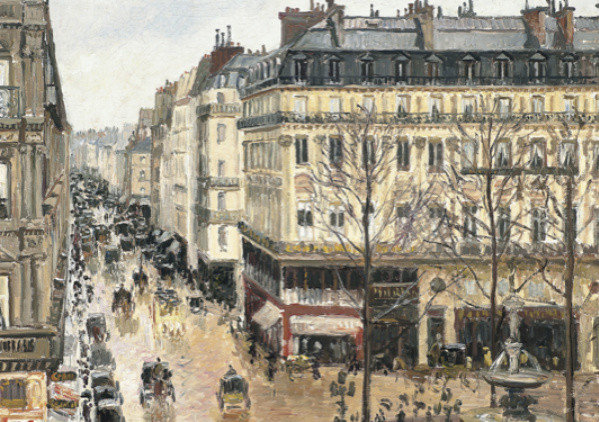
One of the longest running art restitution litigations in the United States has been dismissed for a second time, with another appeal likely to follow. The heirs of Lilly Cassirer Neubauer have been pursuing the return of Camille Pissarro’s Rue St. Honoré, après-midi, êffet de pluie from the Thyssen-Bornemisza Collection in Madrid for more than ten years, but on June 4, 2015 the U.S. District Court in Los Angeles ruled that the Spanish museum has acquired full title to the painting by adverse possession. The key aspect of the decision is the court’s resolution of the choice of law question, namely, should California law or Spanish law apply to the question of who owns the painting? After a lengthy analysis the court determined that Spanish law applies, and that the museum has possessed the painting long enough to have become the owner regardless of the fact that it was sold under duress. So now a case that has already been to the Ninth Circuit Court of Appeals twice will almost certainly head back a third time. The court concluded its decision by appealing to the parties to “pause, reflect, and consider whether it would be appropriate to work towards a mutually-agreeable resolution of this action, in light of Spain’s acceptance of the Washington Conference Principles and the Terezin Declaration, and, specifically, its commitment to achieve “just and fair solutions” for victims of Nazi persecution.” But it is hard to see why that would happen. Notwithstanding the dictates of the Washington Principles, the Collection has been quite content to resist the claim. Now that it has won, it is hard to imagine it suddenly taking a different view.
Read More
Topics:
Lilly Cassirer Neubauer,
Terezin Declaration,
Thyssen-Bornemisza Collection,
Rue St. Honoré après-midi êffet de pluie,
Jacques Goudstikker,
California Code of Civil Procedure § 354.3,
Nazi-looted art,
Foreign Sovereign Immunities Act,
Washington Conference Principles,
FSIA,
adverse possession,
expropriation exception”,
Restitution,
Marei Von Saher,
sovereign immunity,
Jakob Schweidwimmer,
World War II,
Foreign Sovereign Immunities,
Restatement (Second) of Conflict of Laws § 222,
Altmann v. Republic of Austria,
Camille Pissarro,
foreign affairs doctrine,
Ninth Circuit Court of Appeals,
Museums,
Baron Hans-Heinrich Thyssen- Bornemisza,
28 U.S.C. § 1605,
Welfenschatz
When the U.S. District Court in New York recently transferred Leone Meyer’s case seeking restitution of the Camille Pissarro painting La bergère rentrent des moutons (which it had earlier dismissed), we wondered whether the move closer to the painting might prove useful for Meyer. That is to say, would renewed attention prompt non-judicial activity? The Oklahoman has taken notice too, with an in-depth article recently (I am quoted in the print article).
Read More
Topics:
Fred Jones,
University of Oklahoma,
La bergère rentrent des moutons,
Restitution,
World War II,
Leone Meyer,
Camille Pissarro,
Paul Wesselhöft,
Museums,
Jr. Museum,
The Oklahoman
A U.S. District Court judge has taken the recent invitation of the Second Circuit Court of Appeals, and transferred to Oklahoma a lawsuit by Léone Meyer over ownership of a Camille Pissarro painting at the Fred Jones, Jr. Museum at the University of Oklahoma. The case will now proceed in Oklahoma, where the museum seems likely to assert both sovereign immunity under Oklahoma law, as well as an argument that transfers in Switzerland conferred legal title to the museum as a successor to those transfers. However counterintuitive it seems, it may yet be that a court could agree with Meyer that the painting was stolen, but agree with Oklahoma that a Swiss litigation in the 1950s about whether it was sold to a good faith buyer means that Oklahoma holds full title and ownership.
Read More
Topics:
David Findlay Jr. Inc.,
due process,
third party beneficiary,
Metropolitan Museum of Art,
Raoul Meyer,
Nazi Occupation,
American Alliance of Museums,
University of Oklahoma,
Aaron and Clara Weitzenhofer,
Judge Colleen McMahon,
Fred Jones Jr. Museum of Art,
AAM,
Vichy,
La bergère rentrent des moutons,
Association of Art Museum Directors,
Restitution,
David Findlay Galleries,
World War II,
CPLR 301,
Switzerland,
Leone Meyer,
long art statute,
Camille Pissarro,
Museums,
personal jurisdiction,
AAMD,
Christoph Bernoulli,
Swiss judgment,
Rep. Mike Reynolds
Shortly after reports that two of the objects found in Cornelius Gurlitt’s possession in 2012 would “be restituted “soon” to the families from which they were looted under Nazi auspices pursuant to the three recommendations of the Gurlitt Task Force to date, the Task Force has now issued a fourth recommendation. The newest work to be identified for restitution is a Camille Pissarro painting, The Seine seen from the Pont-Neuf, the Louvre in the background.
Read More
Topics:
Cornelius Gurlitt,
Uta Werner,
Gurlitt Task Force,
Gurlitt Collection,
Salzburg,
Restitution,
District Court of Munich,
World War II,
Camille Pissarro,
The Seine seen from the Pont-Neuf the Louvre in th,
Kunstmuseum Bern,
www.lostart.de,
Museums,
Monika Grütters,
Deutsches Zentrum für Kulturgutverluste,
German Cultural Property Center,
Minister of Culture


